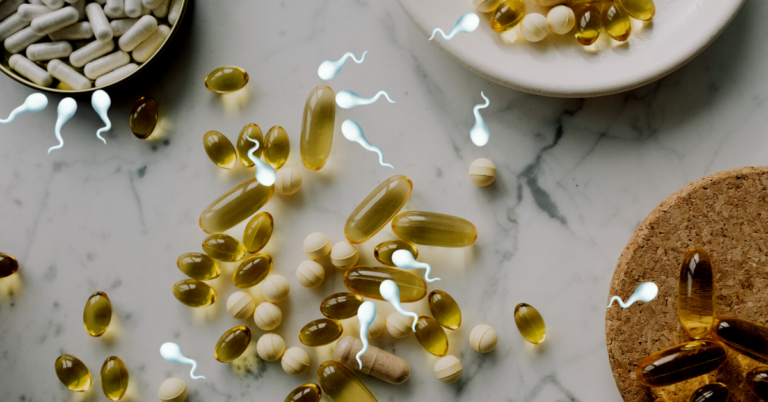How Your Testosterone Levels Change as You Age and What It Means for You

The Role of Testosterone in the Male Body

Testosterone, a hormone primarily produced by the testes in males, plays a crucial role in the male body. It is responsible for the development and maintenance of secondary sexual characteristics, such as deepening of the voice, growth of facial and body hair, and increased muscle mass. Additionally, testosterone is essential for the proper growth and functioning of the male reproductive system, including the testes, prostate gland, and seminal vesicles.
Beyond its reproductive functions, testosterone also has important effects on various tissues and organs throughout the body. It plays a role in bone health by stimulating the production of bone cells and maintaining bone density. Testosterone also influences red blood cell production, which is essential for delivering oxygen to tissues and organs. Furthermore, this hormone is involved in regulating mood, cognition, and sexual function.
Overall, testosterone is a vital hormone that impacts numerous aspects of male physiology and wellbeing. Its effects extend beyond reproductive functions, making it crucial for overall health and quality of life in men. Understanding the role of testosterone is essential for identifying potential imbalances or deficiencies and seeking appropriate interventions to maintain optimal health.
Testosterone Production and Regulation

Testosterone, a hormone predominantly found in males, plays a crucial role in various aspects of the male body. It is primarily produced in the testes and is regulated by a complex system involving the hypothalamus and pituitary gland in the brain. The production and regulation of testosterone are intricate processes influenced by numerous factors.
Testosterone production begins with the release of luteinizing hormone (LH) from the pituitary gland, which stimulates the Leydig cells in the testes to produce testosterone. This process is finely tuned by feedback mechanisms that maintain a delicate balance of testosterone levels in the body. The hypothalamus detects the levels of testosterone in the bloodstream and, if necessary, signals the pituitary gland to adjust the production of LH accordingly.
Numerous factors influence the production and regulation of testosterone. Age, genetics, lifestyle, and overall health all play a role in determining the testosterone levels in an individual. For example, as men age, their testosterone levels typically decline gradually. Additionally, certain medical conditions and medications can affect testosterone production and regulation. Understanding these factors can provide valuable insights into maintaining optimal testosterone levels and overall well-being.
Factors That Influence Testosterone Levels

Age is one of the primary factors that influence testosterone levels in men. Testosterone production begins during puberty and typically peaks in early adulthood. However, as men age, the production of testosterone gradually declines. Research has shown that testosterone levels tend to decrease by approximately 1% per year after the age of 30. This decline is a normal part of the aging process in males.
Another crucial factor that affects testosterone levels is body composition. Studies have found that men with a higher percentage of body fat tend to have lower testosterone levels. In contrast, individuals with a healthy body weight and lower body fat percentage tend to have higher testosterone levels. Fat cells contain an enzyme called aromatase, which can convert testosterone into estrogen. Therefore, excess fat can potentially lead to increased estrogen levels and decreased testosterone production.
Moreover, lifestyle factors such as diet and exercise can also play a significant role in testosterone levels. Research suggests that a diet rich in nutrients like zinc, vitamin D, and omega-3 fatty acids may help support healthy testosterone production. On the other hand, diets high in processed foods, sugar, and unhealthy fats have been linked to lower testosterone levels. Regular physical activity and resistance training can also positively impact testosterone production. Studies have shown that engaging in regular exercise and maintaining a healthy weight can help optimize testosterone levels in men.
Overall, factors such as age, body composition, and lifestyle choices can influence testosterone levels in men. Understanding these factors can provide valuable insights into maintaining healthy testosterone levels and may help individuals make informed decisions to optimize their overall well-being.
Testosterone Levels in Puberty and Early Adulthood
During puberty, testosterone levels in the male body experience a significant increase. This surge in hormone production is responsible for the physical changes that occur during this stage of development, such as the deepening of the voice, the growth of facial and body hair, and the development of muscle mass. Testosterone also plays a crucial role in the maturation of the male reproductive system, including the growth of the penis and testicles.
In early adulthood, testosterone levels tend to stabilize at their peak. This period is characterized by optimal testosterone production, which contributes to the maintenance of muscle mass, bone density, and overall physical vitality. Additionally, testosterone plays a role in maintaining sexual function and drive. However, it is important to note that testosterone levels can vary among individuals, and some may naturally have higher or lower levels than others. It is also worth mentioning that testosterone production gradually begins to decline with age, leading to changes in the body and potential health effects, which will be discussed in later sections.
Certainly! Here’s the information for “Testosterone Levels in Puberty and Early Adulthood” presented in a table format:
| Principle | Benefits | Source Link |
|---|---|---|
| Puberty and Testosterone | Puberty triggers a significant increase in testosterone production | Testosterone and Puberty |
| Development of Secondary Sexual Characteristics | Testosterone contributes to the development of secondary sexual characteristics in males | Secondary Sexual Characteristics |
| Peak Testosterone Levels in Early Adulthood | Testosterone levels peak in early adulthood, contributing to physical and sexual maturity | Testosterone Levels in Early Adulthood |
| Variability in Testosterone Levels | Individual variability exists in testosterone levels during puberty and early adulthood | Variability in Testosterone Levels |
| Impact on Muscle Mass and Bone Density | Peak testosterone levels support muscle and bone development | Muscle Mass, Bone Density, and Testosterone |
| Cognitive and Behavioral Effects | Testosterone influences cognitive functions and behaviors during this period | Cognitive Effects of Testosterone |
| Testosterone Decline with Aging | Testosterone levels may gradually decline with aging after the peak in early adulthood | Testosterone Decline with Aging |
Testosterone Levels in Middle Age
Middle age is a phase of life where testosterone levels in men begin to gradually decline. Testosterone, a hormone produced primarily in the testicles, plays a crucial role in various bodily functions including muscle mass development, bone density maintenance, and libido regulation.
As men reach their 40s and 50s, the production of testosterone starts to decline by approximately 1% per year. This decline can result in various symptoms such as decreased energy levels, reduced muscle mass, increased body fat, and diminished sexual desire. While it is a natural part of the aging process, low testosterone levels in middle age may have an impact on overall well-being and quality of life. It is important to note that individual experiences and testosterone levels can vary, so it is recommended to consult with a healthcare professional for a proper evaluation if any concerns arise.
• Testosterone, a hormone produced primarily in the testicles, plays a crucial role in various bodily functions including muscle mass development, bone density maintenance, and libido regulation.
• As men reach their 40s and 50s, the production of testosterone starts to decline by approximately 1% per year.
• The decline in testosterone levels can result in various symptoms such as decreased energy levels, reduced muscle mass, increased body fat, and diminished sexual desire.
• Low testosterone levels in middle age may have an impact on overall well-being and quality of life.
• It is important to note that individual experiences and testosterone levels can vary.
• Consult with a healthcare professional for a proper evaluation if any concerns arise.
Testosterone Levels in Older Age
As men age, it is natural for testosterone levels to gradually decrease. Testosterone is a vital hormone in the male body, responsible for various functions such as maintaining muscle mass, regulating sex drive, and contributing to overall well-being. Research has shown that testosterone levels typically peak in a man’s late teens or early twenties and begin to decline at a rate of about 1% per year after the age of 30.
The decline in testosterone levels can lead to a range of symptoms in older men, including decreased energy, reduced muscle mass, increased body fat, diminished sexual desire, and mood changes. While these changes are a normal part of the aging process, it is important for men to be aware of the potential impact on their overall health and quality of life. Understanding the connection between testosterone and aging can help men make informed decisions about their health and seek appropriate medical advice if needed.
Signs and Symptoms of Low Testosterone
Low testosterone, also known as testosterone deficiency or hypogonadism, can present with a range of signs and symptoms that may vary among individuals. One of the primary indications of low testosterone is a decrease in sexual desire or libido. Men with low testosterone may experience a reduced interest in sexual activities and may find it more challenging to achieve and maintain an erection. Additionally, they may notice a decrease in the overall quality of their erections.
In addition to sexual symptoms, low testosterone can also manifest as physical and emotional changes. Some individuals may have decreased energy levels and feel fatigued more easily, while others may notice a decrease in muscle mass and strength. Mood alterations, such as increased irritability or decreased motivation, may also be associated with low testosterone. Furthermore, some men may experience an increase in body fat, particularly in the abdominal area. It is important to note that these symptoms can also be caused by other health conditions, so it is essential to consult with a healthcare professional for a proper diagnosis.
Potential Health Effects of Low Testosterone
Low testosterone levels can have several potential health effects on the male body. One of the primary concerns is the impact it can have on sexual health. Men with low testosterone may experience a decrease in libido and sexual desire, as well as difficulties achieving and maintaining erections. This can lead to a decline in sexual satisfaction and overall quality of life.
In addition to sexual health, low testosterone levels can also affect other aspects of physical and mental well-being. Fatigue, decreased energy levels, and a loss of muscle mass are commonly reported symptoms of low testosterone. Some men may also experience an increase in body fat, particularly in the abdominal area. Furthermore, low testosterone has been associated with mood changes, such as irritability, depression, and a decrease in cognitive function.
It is important to note that while these potential health effects are commonly associated with low testosterone, they are not exclusive to this condition. Many other factors can contribute to sexual, physical, and mental health concerns. It is always recommended to consult with a healthcare professional for a proper diagnosis and appropriate treatment plan.
Natural Ways to Maintain Healthy Testosterone Levels
Maintaining healthy testosterone levels is crucial for overall well-being and optimal physical and mental functioning in men. While medical interventions for low testosterone are available, there are also natural ways to support healthy testosterone levels. One important aspect is maintaining a nutritious diet. Nutrient-rich foods such as lean meats, fish, eggs, and dairy products can provide essential vitamins, minerals, and healthy fats that support testosterone production. It is also advisable to include a variety of fruits, vegetables, and whole grains, as they can contribute to overall hormonal balance.
Regular exercise is another key factor in maintaining healthy testosterone levels. Engaging in both cardiovascular exercises and strength training can positively impact testosterone production and regulation. Aim for at least 150 minutes of moderate-intensity aerobic activity per week, along with two or more sessions of strength training exercises targeting major muscle groups. Additionally, getting sufficient rest and quality sleep is vital, as inadequate sleep has been linked to decreased testosterone levels. Aim for 7 to 9 hours of uninterrupted sleep each night to optimize hormonal functions.
Medical Interventions for Low Testosterone
There are various medical interventions available for men with low testosterone levels. One common approach is testosterone replacement therapy (TRT), which involves the administration of exogenous testosterone to supplement the body’s natural production. TRT can be administered through different methods such as gels, patches, injections or pellets. The dosage and method of administration will depend on individual needs and preferences as determined by a healthcare professional.
Another medical intervention for low testosterone is the use of clomiphene citrate. Originally used to treat fertility issues in women, clomiphene citrate has shown promising results in stimulating testosterone production in men. This medication works by blocking estrogen receptors in the hypothalamus, fooling the body into increasing the production of luteinizing hormone (LH), which then stimulates the testes to produce more testosterone.
It is important to note that medical interventions for low testosterone should always be conducted under the guidance of a qualified healthcare professional. They will take into consideration an individual’s specific health history, symptoms, and lifestyle factors to determine the most appropriate treatment approach. Additionally, regular monitoring and follow-up are crucial to ensure that any treatment is effective and safe.
Risks and Benefits of Testosterone Replacement Therapy
Testosterone replacement therapy (TRT) can be an effective treatment for men with low testosterone levels. However, it is important to weigh the potential risks and benefits before considering this therapy.
One of the main benefits of TRT is an improvement in symptoms associated with low testosterone. This therapy can help increase energy levels, enhance libido, and improve mood and cognitive function. It may also help in the building of muscle mass and bone density, which are often compromised in men with low testosterone levels. Additionally, testosterone replacement therapy has been shown to be beneficial for men with sexual dysfunction caused by low testosterone.
However, it is crucial to be aware of the potential risks of TRT. Side effects can vary from person to person, but commonly reported risks include acne, fluid retention, and increased risk of blood clots. There have also been concerns about the potential impact of TRT on cardiovascular health, although studies in this area have provided conflicting results. It is important for individuals considering TRT to discuss these risks with their healthcare provider to make an informed decision.
Lifestyle Changes That Can Impact Testosterone Levels
As we age, the levels of testosterone in the male body naturally decline. However, certain lifestyle changes can have an impact on these hormone levels. Exercise, for instance, has been shown to increase testosterone production and help maintain healthy levels. Weightlifting and high-intensity interval training (HIIT) have been particularly effective in boosting testosterone levels. Additionally, incorporating compound exercises into your workout routine, such as squats and deadlifts, can also have a positive effect on testosterone levels.
Diet is another aspect that plays a role in testosterone levels. Consuming a well-balanced diet that includes an adequate amount of protein, healthy fats, and essential nutrients can help support testosterone production. Studies have shown that diets low in fat and excessive calorie restriction can lead to lower testosterone levels. On the other hand, diets rich in healthy fats, such as omega-3 fatty acids found in fish and nuts, have been associated with higher testosterone levels. Furthermore, adequate intake of vitamin D, zinc, and magnesium, which are essential for testosterone production, may also be beneficial in maintaining healthy hormone levels.
In conclusion, when it comes to testosterone levels, certain lifestyle changes can be implemented to promote healthy hormone production. Regular exercise, specifically weightlifting and HIIT, can boost testosterone levels. Additionally, following a well-balanced diet that includes sufficient protein, healthy fats, and essential nutrients is crucial. It is important to consult with a healthcare professional or a registered dietitian before making any significant changes to your exercise or diet regimen.
Understanding the Connection Between Testosterone and Aging
The connection between testosterone and aging is a topic that has garnered significant interest in recent years. Testosterone is a hormone primarily associated with the male reproductive system, but it also plays a crucial role in various other bodily functions. As men age, their testosterone levels naturally start to decline. This decline in testosterone levels can have significant implications for overall health and well-being.
Research has shown that low testosterone levels can contribute to a range of symptoms that are commonly associated with aging, such as fatigue, reduced muscle mass, decreased bone density, and cognitive decline. Additionally, low testosterone levels have been linked to an increased risk of conditions like cardiovascular disease, diabetes, and depression. However, it is important to note that the relationship between testosterone and aging is complex and multifaceted.
Several factors can influence testosterone levels as men age. While natural biological changes play a significant role, other factors such as lifestyle choices, chronic health conditions, and medications can also impact testosterone production. Understanding these influences and their potential effects on testosterone levels is crucial in identifying appropriate interventions to maintain healthy testosterone levels and mitigate the negative consequences of age-related testosterone decline.
To better understand the connection between testosterone and aging, it is important to explore the intricate mechanisms that regulate testosterone production and the various factors that can influence testosterone levels in men. By gaining a deeper understanding of these relationships, individuals can make informed decisions about their health and well-being, considering both natural ways to maintain healthy testosterone levels and medical interventions when necessary. Stay tuned for more insights on this captivating subject.
What is the role of testosterone in the male body?
Testosterone plays a crucial role in the development and maintenance of male reproductive tissues, including the testes and prostate. It also influences secondary sexual characteristics such as muscle mass, bone density, and body hair.
How is testosterone produced and regulated in the body?
Testosterone is primarily produced in the testes, although a small amount is also produced in the adrenal glands. Its production is regulated by a complex feedback system involving the hypothalamus and pituitary gland in the brain, which release hormones that stimulate testosterone production.
What factors can influence testosterone levels?
Testosterone levels can be influenced by various factors such as age, genetics, certain medical conditions (e.g., obesity, diabetes), medications, lifestyle choices (e.g., diet, exercise, sleep), and exposure to environmental toxins.
How do testosterone levels change during puberty and early adulthood?
During puberty, testosterone levels rise significantly, contributing to the development of secondary sexual characteristics and the maturation of reproductive organs. In early adulthood, testosterone levels tend to be at their peak.
What happens to testosterone levels in middle age?
Testosterone levels gradually decline in middle age, typically starting in the late 20s or early 30s. This decline is a normal part of aging and is often referred to as “andropause” or “male menopause.”
How do testosterone levels change in older age?
In older age, testosterone levels continue to decline, but at a slower rate compared to middle age. It is estimated that testosterone levels decrease by about 1-2% per year after the age of 30.
What are some signs and symptoms of low testosterone?
Signs and symptoms of low testosterone, also known as hypogonadism, may include fatigue, reduced sex drive, erectile dysfunction, depression, decreased muscle mass, increased body fat, and decreased bone density.
What are the potential health effects of low testosterone?
Low testosterone levels have been associated with various health effects, including an increased risk of cardiovascular disease, osteoporosis, diabetes, cognitive decline, and mood disorders.
Are there natural ways to maintain healthy testosterone levels?
Yes, there are several natural ways to maintain healthy testosterone levels, including regular exercise, a balanced diet with adequate protein and healthy fats, stress management, sufficient sleep, and avoiding excessive alcohol consumption.
What medical interventions are available for low testosterone?
Medical interventions for low testosterone may include testosterone replacement therapy (TRT) through gels, injections, patches, or pellets. However, the use of TRT should be carefully considered and monitored by a healthcare professional.
What are the risks and benefits of testosterone replacement therapy?
The risks of testosterone replacement therapy may include an increased risk of cardiovascular events, prostate enlargement or cancer, and potential fertility issues. However, it can also provide benefits such as improved sexual function, increased muscle mass, and improved mood and energy levels.
Can lifestyle changes impact testosterone levels?
Yes, certain lifestyle changes can impact testosterone levels. For example, maintaining a healthy weight, engaging in regular physical activity, reducing stress, getting enough sleep, and avoiding smoking and excessive alcohol consumption can help optimize testosterone levels.






